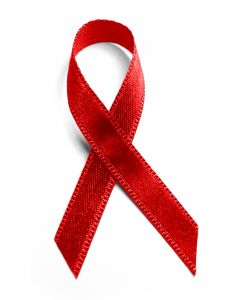But getting these impressive prototypes to the battlefield will take time. Not all may be suitable. And deploying them will need massive funding at a time of AIDS fatigue.
"Now it's up to the donors and the policymakers, with WHO (World Health Organisation) backup, to grab this epidemic by the horns and finally turn it around," said Eric Goemaere of Medecins Sans Frontieres (Doctors Without Borders).
The four-day conference in Rome will be remembered for these findings:
TREATMENT AS PREVENTION: Experts have long suspected that giving antiretroviral drugs to an HIV-infected person not only saves them from the death sentence of AIDS.
It also ratchets down the virus to such low levels that the patient becomes a far smaller risk for infecting others with the human immunodeficiency virus (HIV).
This hunch has been dazzlingly proved, at least for heterosexual intercourse, in a trial among 1,763 couples where one partner was infected with HIV while the other was HIV-free.
When the infected partner was given an early start on HIV drugs, this slashed the risk of infecting the other by 96 per cent.
"The message going out from scientists to politicians is that treatment as prevention works. The problem now is financial," said France's 2008 Nobel laureate, Francoise Barre-Sinoussi.
PRE-EXPOSURE PROPHYLAXIS: Known by its acronym as PrEP, this means giving antiretrovirals protectively to the non-infected partner, as opposed to the infected partner.
The risk of HIV transmission falls by up to 73 per cent, according to new trials reported in Rome.
But PrEP is likely to remain a niche rather than mainstream strategy, at least for now.
It will be more cost-effective to treat someone who is infected -- and there are ethical questions about giving powerful drugs to people who do not have a disease.
Around 6.6 million people in poorer countries have now grasped the daily drugs lifeline but another nine million badly-infected people are still in need.
CIRCUMCISION: Efforts in Africa to promote male circumcision, which reduces the risk of HIV infection for men by 60 per cent, were given a powerful boost by three studies.
New cases of HIV among men plunged by 76 per cent after a circumcision program was launched in a South African township. Had no circumcisions been carried out, new infections among the overall population would have been 58 per cent greater.
"This study is a fantastic result for a simple intervention which costs 40 euros ($A52.39), takes 20 minutes and has to be done only once in a lifetime," said David Lewis of the University of the Witwatersrand.
QUEST FOR CURE: This once-unimaginable goal is now firmly on the scientific agenda.
The idea is to attack the virus in "reservoirs", where it retreats after being suppressed by drugs.
But identifying these lairs, flushing out the virus and devising drugs to kill it is the big task. Even those who believe it attainable say it would be a "functional cure", in the same way that cancer goes into remission and its rebound cannot be ruled out.
The boost for prevention, said campaigners, would halt and eventually reverse the tragic rise in new infections. In 2009, more than 33 million people were living with HIV and 2.6 million people became newly infected.
But financial help is flagging.
In 2010, resources drifted downwards to $US15.9 billion ($A14.87 billion) as Western countries tightened their belts.
Just to get 15 million badly-infected people on AIDS drugs by 2015, in line with the newly stated goal by UN members, will require between $US22 billion ($A20.58 billion) and $US24 billion ($A22.45 billion) annually.
Peter Piot, director of the London School of Hygiene and Tropical Medicine and former director of UNAIDS, said the results at Rome were exhilarating.
But he urged pragmatism.
"Science is running much faster now than we can implement and what we can pay for," he said.
"When you look at longer-term perspectives, even under the best-case scenarios there will still be one million new infections (annually) 10, 20 years from now, and also about one million deaths, and that's a very sobering thought."
The Rome conference gathered around 6,000 researchers, pharmacologists, epidemiologists and other experts under the banner of the International AIDS Society (IAS). They presented over 1,100 pieces of work, a record.




